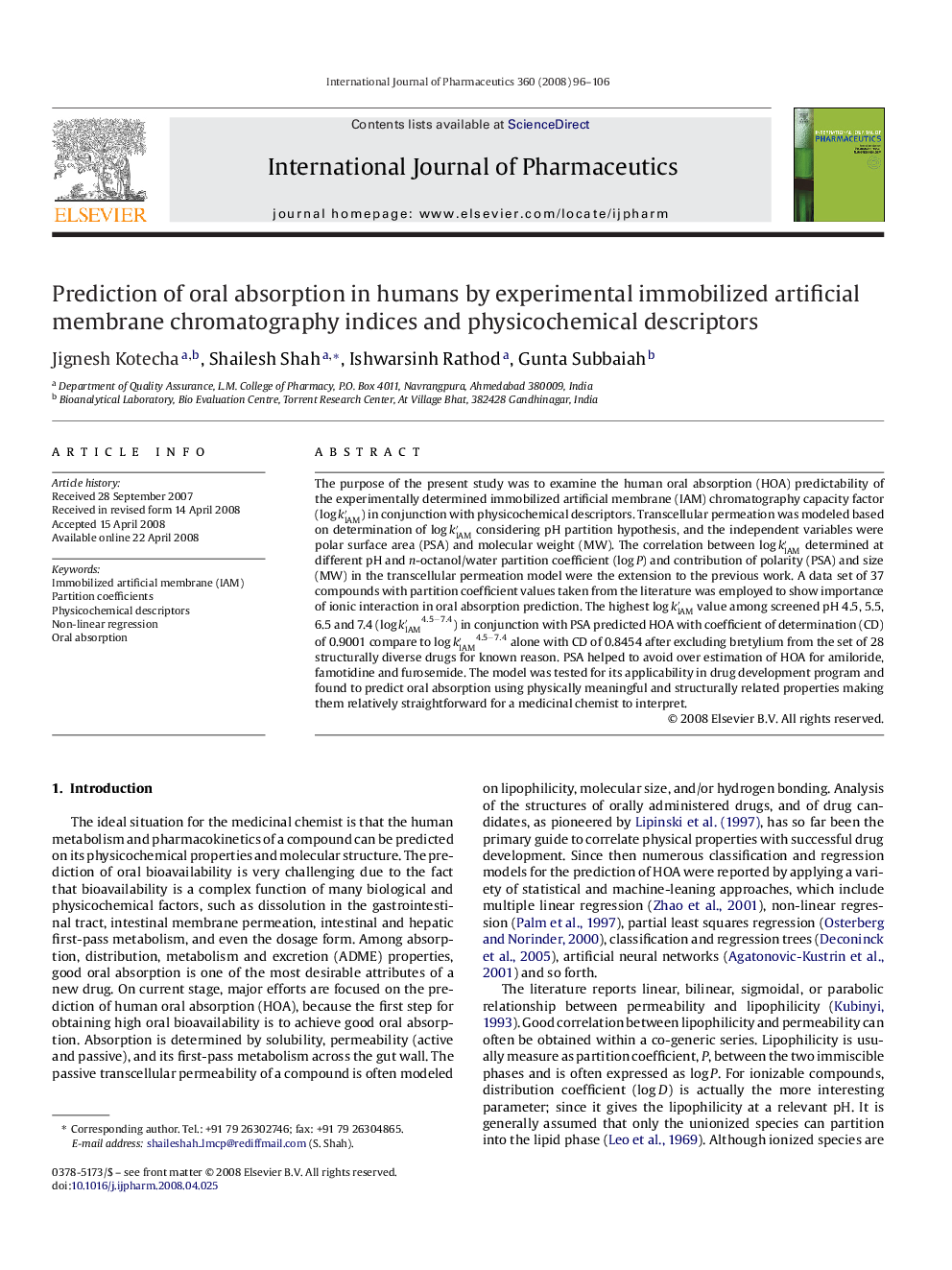| Article ID | Journal | Published Year | Pages | File Type |
|---|---|---|---|---|
| 2505099 | International Journal of Pharmaceutics | 2008 | 11 Pages |
The purpose of the present study was to examine the human oral absorption (HOA) predictability of the experimentally determined immobilized artificial membrane (IAM) chromatography capacity factor (log k′IAM)(log k′IAM) in conjunction with physicochemical descriptors. Transcellular permeation was modeled based on determination of log k′IAMlog k′IAM considering pH partition hypothesis, and the independent variables were polar surface area (PSA) and molecular weight (MW). The correlation between log k′IAMlog k′IAM determined at different pH and n-octanol/water partition coefficient (log P ) and contribution of polarity (PSA) and size (MW) in the transcellular permeation model were the extension to the previous work. A data set of 37 compounds with partition coefficient values taken from the literature was employed to show importance of ionic interaction in oral absorption prediction. The highest log k′IAMlog k′IAM value among screened pH 4.5, 5.5, 6.5 and 7.4 (log k′IAM4.5−7.4)(log k′IAM4.5−7.4) in conjunction with PSA predicted HOA with coefficient of determination (CD) of 0.9001 compare to log k′IAM4.5−7.4log k′IAM4.5−7.4 alone with CD of 0.8454 after excluding bretylium from the set of 28 structurally diverse drugs for known reason. PSA helped to avoid over estimation of HOA for amiloride, famotidine and furosemide. The model was tested for its applicability in drug development program and found to predict oral absorption using physically meaningful and structurally related properties making them relatively straightforward for a medicinal chemist to interpret.
